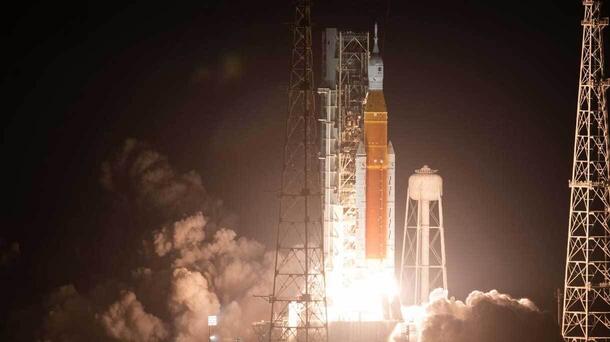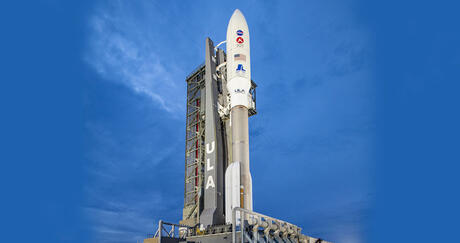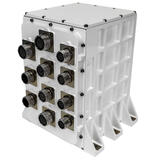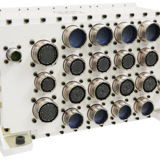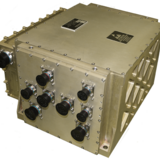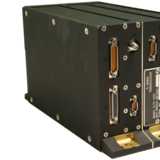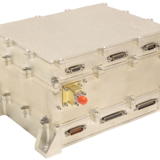Ever-changing and increasing complex mission requirements demand high-performance, technologically advanced and low-cost solutions backed by a history of highly reliable launches. The expanded avionics suite includes communications, range safety receivers, power distribution and control, data acquisition, flight computers and navigation.
THE FIRST 8-MINUTES
The first 8 minutes of any launch are critical for the success of the entire mission and require specialized computer systems to control the launch vehicle through powered flight and adhere to a strict flight path to reach space and either enter Earth’s orbit, or to enable the vehicle to reach destinations such as the Moon or Mars. For example, NASA’s Space Shuttle took approximately 8.5 minutes to reach Earth’s orbit, while the Artemis 1 took 8 minutes and 20 seconds to reach an altitude of 162 km or 100.6 miles.
During those first 8-minutes required to reach space, millions of calculations take place to ensure a launch vehicle remains healthy and in control, the engines are firing consistently and data is being successfully captured for engineers and scientists to manage the launch vehicle.
The Launch Vehicle Phoenix Flight Computer provides a modular, scalable, and ruggedized flight computer solution designed for use in a number of launch vehicle and spacecraft applications. The flight computer provides a wide array of control systems including, launch vehicle guidance, navigation and control (GNC), launch vehicle engine control, attitude control, mission data network control, instrumentation and displays, vehicle health and status monitoring and more.
NEXT STAGES & BEYOND
Once the rocket’s engines complete their burn, a space vehicle enters subsequent flight stages, releasing payloads no longer needed to reach their destination. L3Harris’ spacecraft communications and navigation systems continue to remain active through spacecraft separation, ensuring a correct flight path and a robust collection of flight data. These systems are designed to endure the harsh realities of space and provide resilient, reliable and stable connections.
For spacecraft remaining in Low Earth Orbit (LEO) or docking with the International Space Station, L3Harris also provides the radio for NASA’s Common Communications for Visiting Vehicles (C2V2) program for the ISS. C2V2 is a program designed to provide standardized communications between the ISS and docking vehicles. The system is secure and provides reliable communications with commercial crew and other visiting vehicles. It is available for all phases of rendezvous, docking and mated operations.
L3Harris has a vast and diverse history in spacecraft communications beyond LEO. For 20 years, every U.S. Mars rover and orbiting spacecraft mission have used L3Harris transceivers - including the Electra-Lite and Electra on both the current Perseverance lander and orbiting spacecraft.
DISCOVER WHAT L3HARRIS SUITE OF AVIONICS and COMMUNICATIONS CAN DO:
Navigation & Computing
L3Harris provides modular, fault-tolerant flight computer solutions, Inertial Measurement Units (IMUs) and GPS tracking and navigation units.
Data Acquisition
L3Harris’ flight-proven, ruggedized, high-performance data acquisition systems are available with a full complement of off-the-shelf modules. Our scalable data acquisition solutions are offered with sensor excitations, signal conditioning and data packet generation.
Communications
L3Harris produces multi-mode, high-efficiency, flight-proven S-band telemetry transmitters. Our ground network and Tracking and Data Relay Satellite System (TDRSS)-compatible transmitters and transceivers are complete with embedded high-power Solid-State Power Amplifiers (SSPA).
Power
Fault-tolerant distribution and control of Ground Support Equipment (GSE) and vehicle battery power are present in L3Harris’ avionics systems.
Control Systems
L3Harris’ systems offer complete vehicle control including ignition and staging, engine, thrust vector, hydraulic and actuator control.
Safety
L3Harris supplies next-generation Autonomous Flight Safety Systems (AFSS) as well as heritage Enhanced Flight Termination Systems (EFTS) and Automatic Destruct Units (ADU).
Propulsion Solutions
Our wide range of reliable rocket engines and motors ensure mission success. L3Harris propulsion solutions span the range of performance required for all launch vehicle applications.
